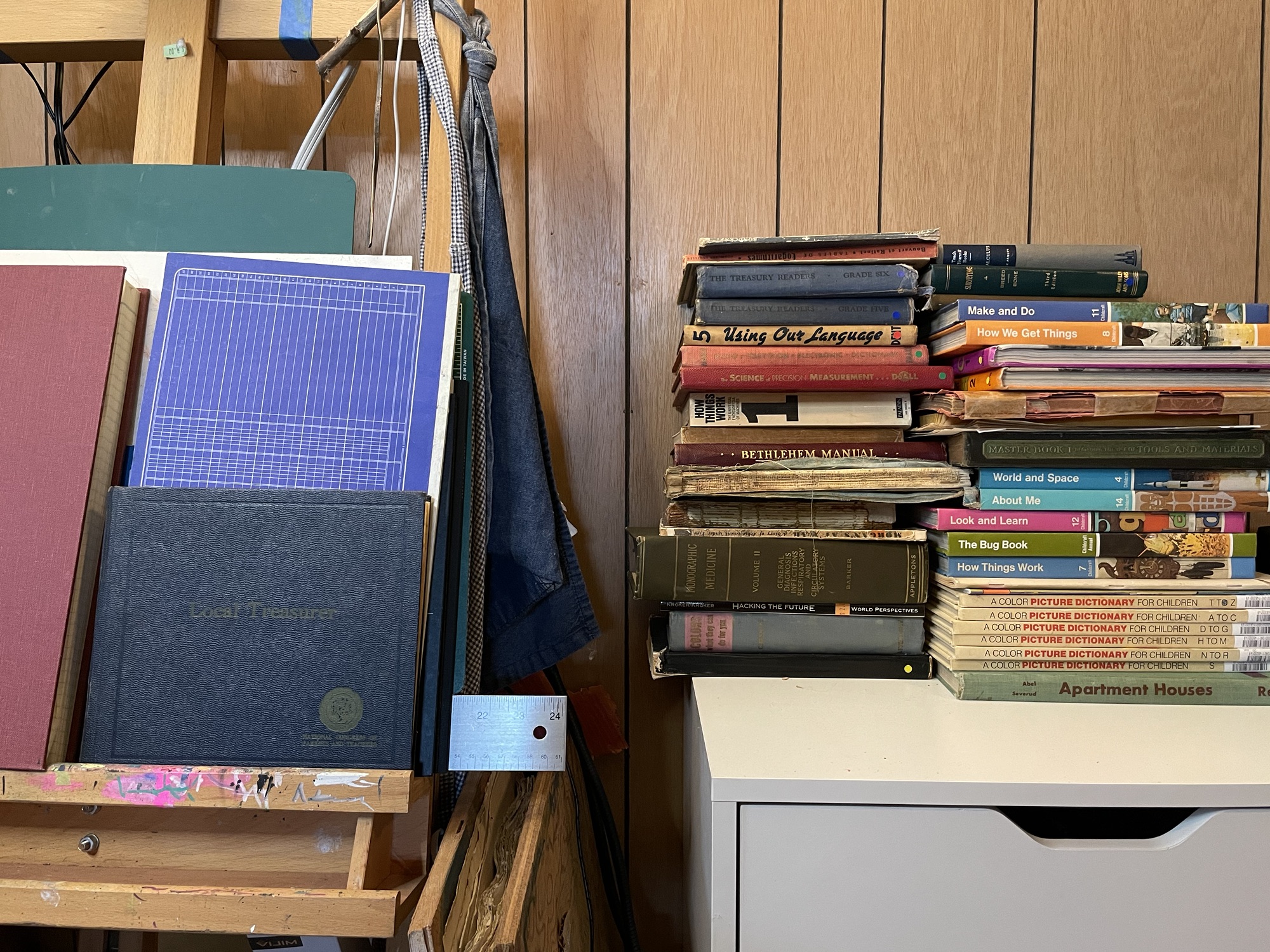In my last post I talked about one of the main spaces I work creatively these days and having the tools, supplies, and various points of inspiration and connection at hand while I work.
I’ve always been interested in finding the lines that join to and run through things. As a kid, my encyclopedia set and the image rich Time-Life nature, science, and anthropology volumes on our home bookshelves were a world of connections in my hands. Those books felt like they contained the universe.
As part of how I make art now, I practice at finding transient connections between the marks my hands make, my thoughts in real time, and often prompts and tangents pulled from source materials.
These source materials are mostly paper ephemera of various sorts: books, found scraps, my own previous writing and artwork. Some of the materials find their way directly into drawings in the form of collage, some are just mental crossroads, and some supply words and phrases that get written into whatever set of connections make up the current drawing.
I thought I would show a few of the sources from the stacks in the image above and talk about how I have or might use them.

by Charles Terwilliger
I bought this clock repair guide at a true junk shop in Toronto that was the discovery point for many bits of paper ephemera for years until we moved away and then it sadly closed down.


It’s the kind of nearly destroyed book that feels like readymade art to me. “Just mount it in a frame.” Gayla or I might have said. “It’s done!” This can sometimes mean that it takes me longer to put a book like this to use because it already feels special. But in this case I got over myself and have collaged with pages from this book many times.

Here’s another example of some rough and ready raw materials. This simply created book is mostly typewriter formatted pages but there are also some lovely hand-drawn diagrams and the faded red cover with its crusty ancient tape repair job are just perfect. Over the years, I’m sure much of this book will make its way into creative projects.



Technical diagrams get pulled into my drawings frequently. And many of my drawings I have thought of as diagrams and sometimes machines themselves. Emotional technologies are a running theme for me.

This is a book I have drawn from many times but it stays intact because it’s really a fantastic encyclopedia of the technical/mechanical workings of a boggling array of things. Kid me would have treasured this book.
The way I use it as source material is to open it randomly and quickly look at the opened spread for any words or phrases that “spark something”. Those words might make their way directly into the drawing or they might simply inform what I do next.


Here are another couple of books that will likely stay in one piece.


These books are charged with a certain type of nostalgic excitement. The Childcraft volumes are super well designed and illustrated. And the section titles have this resonance that has lead to many drawings taking their cue from the words.

Here are three drawings directly influenced by opening a Childcraft volume at random.



Here’s a very different source. This catalogue of CB radio tech has a great of its time design but it is also filled with advertising copy that, in isolation, gets filled with a kind of almost metaphysical importance.

I mean, “Echo will fill your unit with crystals” just sounds ominous and profound like the 2001 stargate — filled with stars.


Stuff like this informs the almost figurative machine drawings that I make occasionally. They’re drawings that don’t attempt to illustrate any clear function or real technology. When they come up for me I often identify them by adding rough framing and sometimes screw heads in the corners — they remind me of some of the bespoke modular synth and effects rigs people build.


Here’s a little British driving manual that I have pulled loads of things from. It has lots of interesting phrases that have worked things for me and diagrams are beautifully printed in crisp black and red.




Here are a couple of books in a similar vein. Sometimes I use diagrams outright as collage elements and other times I’ll roughly redraw them.




Many of my recent drawings contain some intentionally raw grids that I fill with letters, numbers, or more often with chart or graph like forms. For someone that has never been very good at math and science I am very guided by its language and visuals.


There’s a psychological term, Apophenia, that in its basic form refers to “the tendency to perceive meaningful connections between unrelated things.”
I don’t have this pathology in a clinical sense but my mind does seek to draw lines between things — literally and figuratively.
